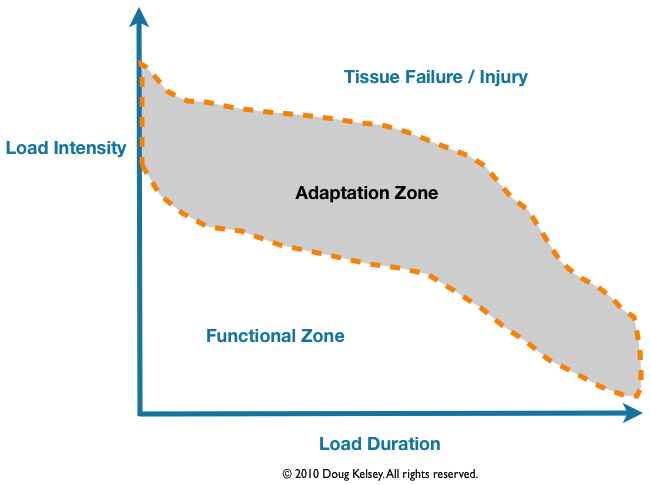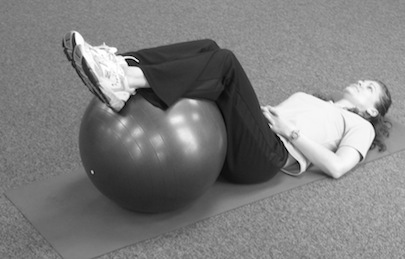- You are here:
- Home »
- Blog »
- Joint Health / Pain »
- What to Do if Running Hurts Your Lower Back
What to Do if Running Hurts Your Lower Back
A question from a reader –
I read your posts with interest.
I was under the impression that running is bad for the spine due to the the jolting affect every time you land on the foot.
I am 62 yrs young and notice if I run for a mile or so that my lower back hurts.
Shouldn’t a less impact form of exercise be better for us?
If so what would you suggest? And do you have any exercises that keep the back supple? It seems that once the back gets stiff thats when the damage can be done.
Cheers –
Jim* (whenever you see *, the name has been changed for privacy reasons)
Thanks, Jim for your questions. As I see it, the questions are:
- Is running, in general, a bad idea if you want healthy joints?
- Why does my back get stiff and is there anything I can do to help this?
Is Running a Bad Idea for Your Joints?
Not necessarily.
People who have been running regularly for many years and also are conservative with their dose management, generally do not have joint pains from running.[1]Cymet TC, Sinkov V. Does long-distance running cause osteoarthritis? J Am Osteopath Assoc. 2006 Jun;106(6):342-5. Review. PubMed PMID: 16790540.
Problems arise when a person, for example, decides one day to lose weight and he thinks running is a good way to do that, so he dons the shoes and out the door he goes. But, having either never run or not run in many years, his body is unprepared for the onslaught of force. Eventually, something will hurt.
Dose management, in running, means you don’t increase your distance or speed excessively. You gradually add either distance or speed. The biggest mistake most runners make is to increase their mileage and speed too quickly. In fact, it’s the leading cause of nearly all running injuries.
Does How You Run Change Your Injury Risk?
Rearfoot strike versus midfoot or forefoot? Does one carry more or less injury risk than another?
Not really. Changing from a rearfoot strike to a midfoot or forefoot strike will change how and where the load is distributed but you still have the same total load. So, a particular running style can reduce force on the knee (and perhaps the lower back) – like Chi Running or Pose Method – but does so at the cost of increasing the force on the calf, Achilles tendon, and foot.
What About Stiffness?
To understand stiffness, you need to first understand the concept of the Functional Zone (FZ).
FZ that explains the relationship between force (load), duration, symptoms, and function. The FZ is a range of force (or load) and duration that your body can manage without symptoms.
In people who are healthy and fit, the FZ can be quite large while for someone who is unhealthy or unfit, the zone is often narrow.

Outside the FZ, is a region I call the Adaptation Zone (AZ). This is a range of force and time that your body can use to gain strength or capacity. Exercise is controlled trauma. All exercise creates injury. You probably don’t think of it that way because you recover – most of the time. The question isn’t “Will this exercise cause injury?” but rather “How quickly will I recover from this exercise?”
Recovery from exercise moves the Functional Zone boundary up and to the right. When you have a wide FZ, you can do a lot of stuff and, although you may have soreness or a sense of stiffness or tightness, you recover.
When you don’t recover, you end up in the Tissue Failure Zone (TFZ). This is when one or more biologic tissues – tendon, ligament, fascia, muscle, bone, etc – fail to meet the physical demand and tissue damage follows.
Age, injury, and de-training all cause the FZ and the AZ to shrink. It gets easier to overload yourself and you stay injured longer.
Stiffness is an example of crossing from the FZ into the AZ. Stiffness isn’t always a bad thing but it is something to pay attention to. Many times, people dismiss the stiffness, don’t make any adjustments to their routine and end up in the TFZ.
Let’s assume Jim discovers lower back stiffness near the end of a run. What should he do about that?
I suggest a couple of things.
Jim needs to know how long he can run without producing stiffness. If it normally appears at 30 minutes, then wait a couple of days and go for a run – same route, same pace – for 20 minutes. If he notes stiffness, then he has to repeat the process until he finds a duration that does not produce stiffness. He has to find his FZ for running.
But if 20 minutes fails to produce stiffness, then, after a couple of days of rest, he can try 25 minutes. Somewhere between 20 and 30 minutes is the upper limit of his FZ for running.
Once Jim knows the FZ duration, then he can use that as a training tool. When he runs, he stays just below the threshold and intermittently retests. What often happens is the FZ improves. He can increase his time without producing stiffness.
The second thing I suggest is an exercise to help the lower back joints become more supple or move with ease.
You need a physioball (sometimes called a Swiss Ball or Exercise Ball or Stability Ball).
You lie down on your back, place your lower legs on the ball. You might want a pillow for your neck and each arm (this is to promote relaxation).
Gently, rock the lower body side to side no more than about 6 inches. If you find that your hip comes off the ground, the movement is too great. We call this exercise “Lumbar RocknRoll”.
This motion is small, gentle, slow.
You do this for 5 minutes or more, ideally, 3 times a day.
I suggested this to a business acquaintance once. We met for coffee at Starbucks and, in the course of conversation, he mentioned he was struggling with lower back pain. He was an avid golfer and had developed low back pain while playing. I asked him several questions and thought the Lumbar RocknRoll might help him. I explained the exercise, I sketched it on a napkin. A couple of weeks later I received an email from him. The exercise had, in his opinion, solved the problem. He then started showing the exercise to all of his buddies. I doubt it helped all of them – nothing works for everyone all the time. But that’s another story.

Lumbar RocknRoll
Should Jim stop running? If he can’t find the FZ for running, yes. It doesn’t mean he has to give up running forever necessarily but he will need to work on his FZ.
Thanks for reading.

PS – If you like this article, why not share it with a friend?
To get my Secret Weapon to fight knee, hip & back pain and stiffness, subscribe for free today!
References
| ↑1 | Cymet TC, Sinkov V. Does long-distance running cause osteoarthritis? J Am Osteopath Assoc. 2006 Jun;106(6):342-5. Review. PubMed PMID: 16790540. |
|---|
